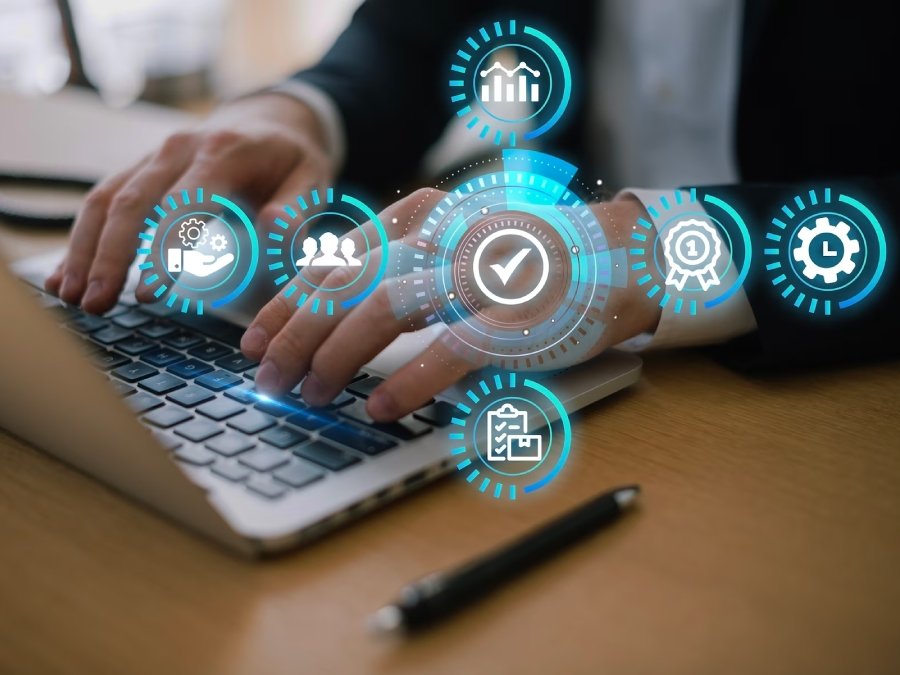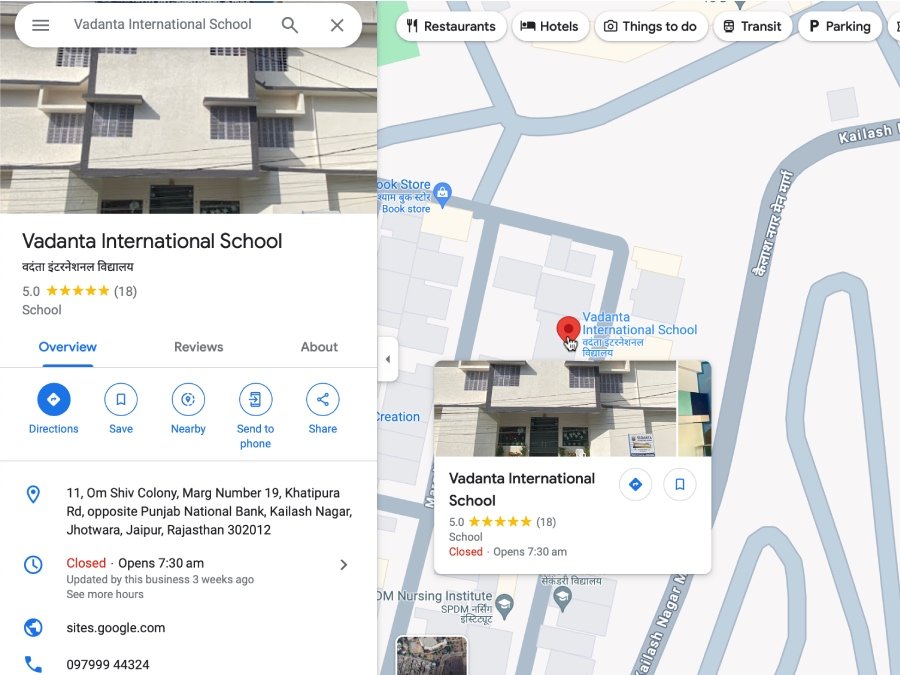Introduction – Top 10 Tech Trends for Small Businesses in 2024.
Small businesses play a vital role in almost every economy around the world. They help drive innovation, create jobs, and provide important goods and services within local communities. However, small businesses often face challenges in keeping up with the latest technological advancements. Adopting new technologies can help small businesses increase productivity, reduce costs, reach new customers, and gain a competitive edge.
This article provides an overview of the top technology trends that are expected to make a major impact on small businesses in 2024. These technologies present significant opportunities as well as some potential challenges that small business owners should consider before implementation. By understanding the latest tech developments and how they can be applied, small businesses can make smarter decisions on which solutions may provide the most value. The focus is on emerging technologies that are likely to see increased adoption over the next few years. Top 10 tech trends for small businesses in 2024 are:
Artificial Intelligence
Artificial intelligence (AI) is one of the most transformative technologies for businesses. AI refers to computer systems that can perform tasks normally requiring human intelligence, such as visual perception, speech recognition, and decision-making. Key AI applications for small businesses include:
AI Chatbots and Virtual Assistants
Chatbots are computer programs that simulate human conversation using text or voice. Virtual assistants like Siri and Alexa are a type of chatbot. Small businesses can use chatbots and virtual assistants to automate customer service and provide 24/7 support. They can be programmed with FAQs to answer common queries. Chatbots save time and costs by resolving routine customer issues without human agents. They can also be used for making appointments, processing orders, and onboarding customers.
AI for Business Operations
AI can assist with various internal operations:
- Automate accounting, billing, reporting, and compliance. AI accounting tools can automatically process invoices, receipts, and expenses.
- Improve inventory and supply chain management through demand forecasting and production optimization. AI algorithms help anticipate inventory needs.
- Enhance cybersecurity by quickly detecting and responding to threats. AI can identify suspicious patterns that indicate malware, hacking attempts, or data breaches.
Benefits of AI
- Increased efficiency – AI automates time-consuming tasks, allowing staff to focus on higher-value work.
- Lower costs – Reduced need for hiring staff for simple repetitive tasks.
- Improved customer satisfaction – Quicker response times and 24/7 availability with chatbots.
- Higher revenues – Insights from data patterns help target sales and marketing.
The right implementation of AI can give small businesses an edge over the competition. The future looks increasingly driven by AI automation!
Internet of Things
The Internet of Things (IoT) refers to the billions of devices and sensors that are now connected to the Internet. For small businesses, IoT offers the potential to greatly improve operational efficiency and cut costs. IoT is one of the top 10 tech trends for small businesses in 2024.
IoT enables companies to track inventory through connected sensors, monitor the supply chain in real-time through GPS tracking, and improve physical security through connected cameras and motion sensors. All of this real-time data and connectivity allows for increased automation, better business intelligence, and more informed decision-making.
For example, small retailers can use IoT sensors to track inventory levels. When stocks run low, the system can automatically order more from suppliers and notify staff. This improves supply chain management, reduces human error, and helps avoid stock-outs. IoT sensors can also monitor aspects like temperature and humidity to ensure proper storage and food safety.
Overall, IoT allows small businesses to gain greater control and insights into their operations. This leads to reduced waste, faster processes, lower costs, and enhanced customer experiences. The proliferation of affordable IoT sensors and cloud data storage makes these technologies accessible for small business budgets. With the right IoT strategy, small companies can leverage connected devices and real-time data to become more competitive and productive.
5G
5G brings significantly faster mobile internet speeds, lower latency, and the ability to connect many more devices simultaneously. This will enable innovations and transform the customer experience for many industries. 5G is one of the top 10 tech trends for small businesses in 2024.
With 5G, mobile download speeds can reach up to 20 Gbps, versus 1 Gbps for 4G. Latency drops to just 1 millisecond versus 30-70 milliseconds for 4G. This responsiveness allows technologies like autonomous vehicles to make critical driving decisions instantly using real-time data.
5G enables advanced use cases for technologies like virtual reality, augmented reality, and cloud computing that require massive bandwidth and quick response times. It allows remote collaboration through virtual meeting spaces with seamless video conferencing.
Businesses can use 5G to deliver richer real-time experiences. Retailers can send tailored offers and recommendations as customers browse stores. Stadiums and theme parks can stream personalized video feeds to visitors based on preferences and location.
To fully leverage 5G capabilities, businesses may need to update network infrastructure, applications, and devices. However, the investment promises to revolutionize customer engagement and unlock new revenue opportunities.
Virtual Reality
Virtual reality (VR) provides immersive digital experiences that simulate physical presence in real or imagined environments. VR headsets create a 360-degree virtual world that users can interact with and explore. VR is one of the top 10 tech trends for small businesses in 2024.
VR technology is ideal for training simulations, virtual meetings, and conferences, showing 3D renderings of designs, and other applications where an immersive visual experience aids understanding and productivity. By using VR, employees in remote locations can collaborate and communicate as if they were physically together. VR reduces the need for business travel and enables more effective demonstrations, training, and collaboration.
Key ways VR can benefit small businesses:
- Training new employees with simulated on-the-job scenarios to prepare them for real-world experiences. This allows for practice without real-world consequences.
- Conducting virtual meetings and conferences without the cost of travel and facility expenses. This also enables participation from any global location.
- Viewing 3D renderings of products, building designs, or other visuals as if physically present. This facilitates decision-making, design iterations, and stakeholder feedback.
- Providing virtual tours of properties, plants, or locations to better convey scale, context, and details. Useful for real estate, construction, manufacturing, and more.
- Creating an immersive digital showroom to showcase products or services in context. Allows customization for each customer.
- Simulating equipment operation or repair scenarios for training technicians and specialists. Develop skills without wear and tear on physical assets.
As VR technology improves in visual fidelity, interfaces, and applications, it will become an increasingly valuable tool for small businesses to improve remote collaboration, conduct virtual training and events, visualize designs in 3D, and create immersive customer experiences. The benefits of reduced travel, better training, and collaborative functionality make VR an important emerging tech trend for small businesses.
Augmented Reality
Augmented reality (AR) overlays digital elements like images, video, and text onto the real world, enhancing the user’s perception of reality. AR allows businesses to create highly engaging, interactive experiences for sales, marketing, training, and product demos. AR is one of the top 10 tech trends for small businesses in 2024
For sales and marketing, AR can bring products to life. Clothing brands have used AR to enable customers to digitally “try on” items at home. Car dealerships have AR apps that show vehicles with custom options like colors and wheels overlaid on the real car. These interactive experiences boost customer engagement and satisfaction.
AR is hugely beneficial for training. Instructions can be overlaid onto equipment being repaired, helping guide technicians. Doctors can view MRI scan data layered onto a patient’s body before surgery. AR boosts comprehension, accuracy, and retention for trainees.
During product demos, AR gives potential buyers a first-hand understanding of the item in a real-world context. For example, AR apps allow you to visualize furniture in your actual home before purchase. This reduces returns and builds confidence in buying decisions.
With engaging, interactive AR experiences, businesses can connect with customers in new ways, driving sales, brand loyalty, and advocacy. As AR headsets and smart glasses become more common, the opportunities will grow exponentially.
Blockchain
Blockchain is a secure distributed ledger technology that is transforming operations across many industries. This technology provides a decentralized database or digital ledger of transactions that is distributed across a peer-to-peer network.
Blockchain is one of the top 10 tech trends for small businesses in 2024. Blockchain offers enhanced transparency, security, and speed over traditional transaction methods because each block in the chain is cryptographically connected to the previous one. This makes it very difficult to tamper with older records without being detected.
Some key benefits of blockchain technology for small businesses include:
- Digital Payments – Blockchain enables fast, global digital payment transactions without intermediaries. This can significantly reduce transaction fees.
- Smart Contracts – These self-executing contracts are built into the blockchain to automatically trigger actions like payment transfers when conditions are met. This automates business processes.
- Supply Chain Tracking – Blockchain improves transparency in supply chains by tracking assets from production to delivery. This reduces losses and improves efficiency.
By implementing blockchain technology, small businesses can conduct more secure digital transactions, automate operations, and collaborate across their supply chain. The decentralized nature of blockchain also makes it less vulnerable to security breaches or centralized failures. With blockchain adoption increasing, now is a great time for small businesses to explore how they can leverage this technology to gain a competitive advantage.
Big Data Analytics
Big data analytics involves collecting and analyzing large data sets to uncover patterns, market trends, customer preferences, and other actionable business insights that can help organizations make informed decisions. Big data analytics is being increasingly adopted by small businesses to leverage data-driven insights for competitive advantage. Big Data Analysis is one of the top 10 tech trends for small businesses in 2024.
Some of the key ways small businesses can benefit from big data analytics include:
Targeted Marketing
Analyzing customer data like demographics, location, buying behavior and preferences can enable highly targeted marketing campaigns. Small businesses can identify the most profitable customer segments and tailor offerings, pricing, and messaging accordingly.
Predictive Analytics
Big data analytics empowers the prediction of future outcomes using advanced statistical algorithms. Small businesses can forecast sales, detect fraud, anticipate operational issues, and make other data-based predictions to gain market foresight.
Customer Insights
Big data gives a 360-degree view of the customer journey from initial contact to purchase and post-sales engagement. Understanding customer pain points, motivations and behavior leads to better products, services, and experiences.
Overall, big data analytics is becoming a must-have for small businesses seeking to leverage data for sharper decision-making and predictive intelligence. With the right analytics tools and skills, small businesses can derive meaningful insights from data to outsmart and outpace the competition.
Cloud Computing
Cloud computing refers to on-demand services, such as data storage, software, and computing power, that are delivered over the internet. With cloud computing, businesses can access technology services through the cloud without having to build and maintain expensive computing infrastructure. Cloud Computing is one of the top 10 tech trends for small businesses in 2024.
Cloud computing enables businesses to be flexible and agile with their IT resources. Rather than purchasing hardware and software for on-premise infrastructure, businesses can access what they need via the cloud and pay for just what they use. This provides the ability to scale services up or down as needed.
The main benefits of cloud computing for businesses include:
- Cost savings – No need for capital expenditures on hardware/software and lower operating costs for energy use and IT personnel. Usage-based billing structure.
- Flexibility – Ability to quickly add or reduce IT resources for storage, computing, databases, etc. based on demand.
- Scalability – Services can scale to meet needs. Dynamic provisioning provides expandable storage, processing power, memory, etc.
- Accessibility – Universal access from any connected device. Employees can work remotely while still accessing files, apps, etc.
- Reliability – Cloud providers offer backup systems, data recovery, and disaster recovery options.
- Innovation – New technologies and upgrades are continuously rolled out without businesses needing to invest in upgrades themselves.
- Collaboration – Cloud-based tools allow for seamless file sharing and collaboration.
Cloud services like data storage, backup, software-as-a-service, and computing platforms allow small businesses to access enterprise-level IT capabilities that were previously only affordable to large organizations. This levels the playing field and lets small businesses take advantage of the latest innovations. With the flexibility, scalability, and cost structure of the cloud, businesses can get the IT resources they need when they need them.
Conclusion: Top 10 Tech Trends for Small Businesses
In 2024, small businesses have an exciting array of new technologies at their disposal to drive growth, productivity, and innovation. Throughout this article, we covered the Top 10 Tech Trends that small businesses should consider adopting over the next few years.
The top 10 Tech Trends are Artificial Intelligence, Internet of Things, 5G, virtual and augmented reality, blockchain, big data analytics, and cloud computing. These techs are some of the most important emerging technologies to pay attention to. Each one presents unique benefits and opportunities for small businesses.
AI and machine learning will enable smarter business processes, better customer experiences, and data-driven decision-making. IoT allows remote monitoring and tracking to optimize operations. 5G provides the ultra-fast connectivity needed for technologies like VR and IoT. VR and AR allow more engaging customer and employee experiences. Blockchain brings enhanced security, transparency, and automation to transactions and processes. Big data analytics uncovers key insights from data. The cloud offers storage, software, and computing resources on demand.
These breakthrough technologies are becoming more accessible and affordable for small business adoption. By thoughtfully integrating them, small companies can gain a competitive edge and future-proof their operations. The key is choosing the right technologies aligned with your business goals and capacity. With the right strategy, small businesses can leverage these trends to work smarter, engage better, and grow faster.





